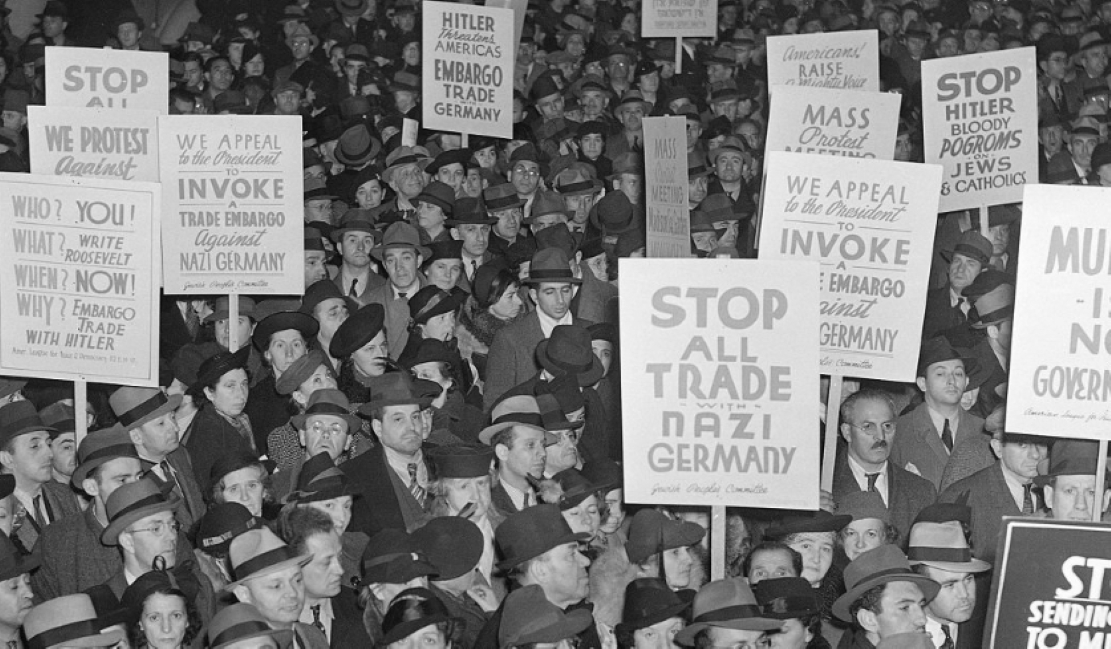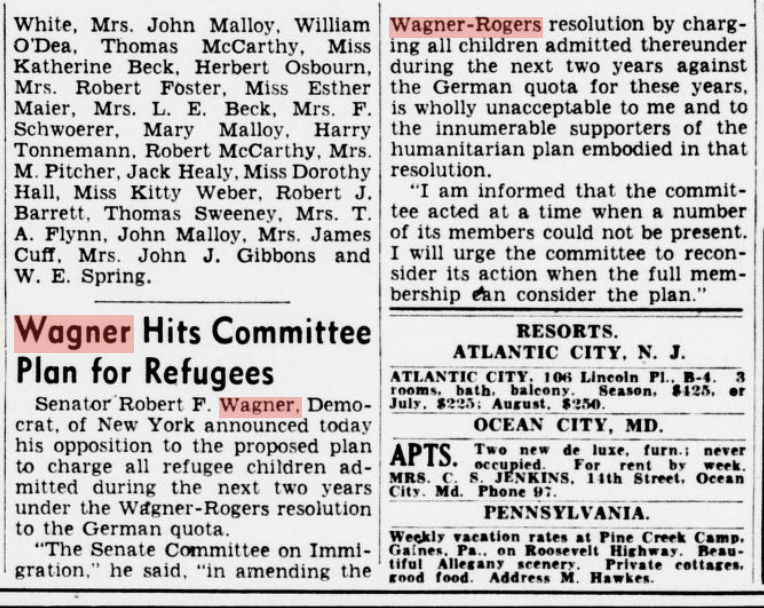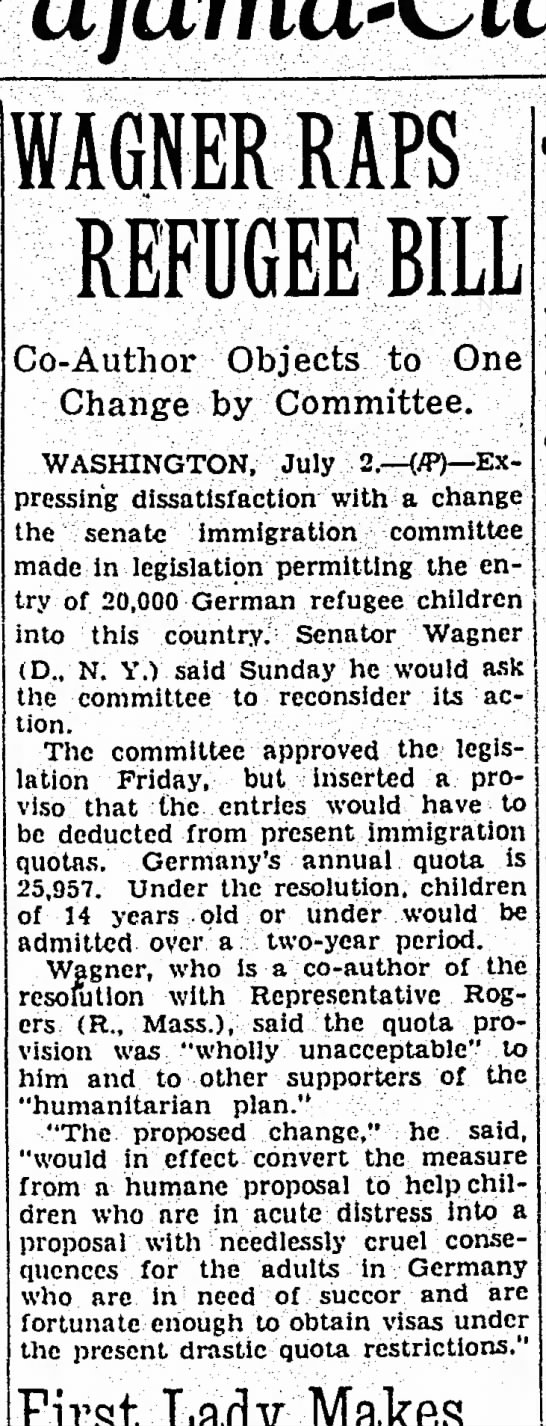Debating Immigration: Wagner-Rogers Bill
Debate

Americans and the Holocaust, 1938, Facing History and Ourselves
On February 9, 1939, congressional Senator Robert Wagner and Representative Edith Rogers proposed a humanitarian diplomatic measure - the Wagner-Rogers Bill - to allow 20,000 additional Jewish Children into the United States throughout 1939 and 1940. A January 1939 public opinion poll asked Americans how they would accept a proposal to “permit 10,000 refugee children from Germany to be brought into this country and taken care of in American homes.” 67% of citizens opposed this idea.

After four days of Senate-House committee hearings in April 1939 the bill moved on to the full House Immigration Committee for consideration. Without White House support, the majority sided with the opposition and would require the 20,000 child immigrants be included in the existing German quota, nullifying the entire purpose of the legislation.
The Evening Star, Washington, D.C. Monday, July 3, 1939, Chronicling America
Despite the optimistic headline, the debates continued.
On June 30, one Senate committee passed the Wagner-Rogers Bill, but another committee passed a bill to end any immigration quotas to the United States over the next five years.
The only way the Wagner Rogers bill would pass was if the two bills were combined.
The prevailing opinion remained that by accepting the 20,000 children in the proposal the United States would have to close the door to most Jews trying to escape Europe.

Child Refugee Bill Approved, Arizona Republic July 1, 1939, USHMM
Little is written about the death of the bill. On July 1, 1939 Wagner pulled his support. He reasoned that tens of thousands of adults and children would be left in Europe if the revised bill went to vote. In the end, the bill died in committee marking the end of this historic attempt at debate and diplomacy.

